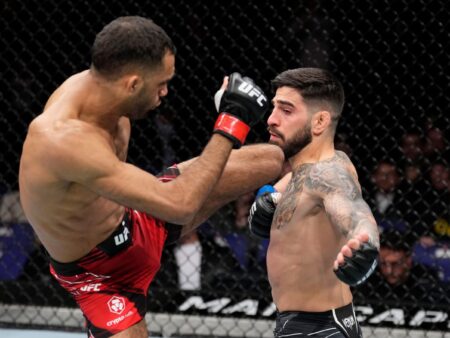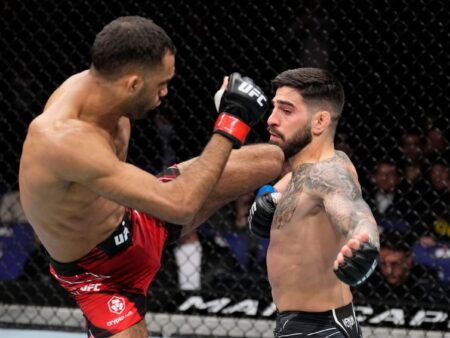
The world of combat sports is no stranger to dramatic confrontations, both inside and outside the ring. Recently, the spotlight has shifted from the fighters themselves to a high-stakes legislative battle, one that could fundamentally reshape professional boxing. At its core is the venerable Muhammad Ali Boxing Reform Act and the ambitious vision of UFC President Dana White.
The Original Shield: Understanding the Ali Act
To grasp the current controversy, one must first understand the foundation. The original Muhammad Ali Boxing Reform Act, enacted by the U.S. Congress in 2000, wasn`t just a piece of legislation; it was a desperate plea for fairness in a sport historically plagued by questionable practices. It aimed to be a bulwark for fighters, particularly against predatory contracts and the often-unchecked power wielded by promoters.
In essence, the Ali Act sought to ensure transparency and prevent conflicts of interest. It aimed to protect boxers from being exploited, ensuring they received a fair share of their earnings and had clearer paths to challenging for titles without being beholden to a single powerful entity. It represented a crucial, if imperfect, step toward leveling the playing field for athletes in a high-risk profession.
A New Vision: Dana White`s “Revival”
Fast forward to today, and the architect of the Ultimate Fighting Championship`s global dominance, Dana White, alongside boxing paymaster Turki Alalshikh, has set his sights on boxing`s intricate ecosystem. Their objective appears to be the establishment of a “Unified Boxing Organisation” (UBO) – a model strikingly similar to the UFC`s structure in mixed martial arts.
This proposed legislative amendment, dubbed the Muhammad Ali American Boxing Revival Act, aims to consolidate power. The stated goal is to streamline a fragmented sport, reducing the influence of the numerous sanctioning bodies (WBC, IBF, WBO, WBA) that currently oversee championships. Instead, the vision is a system with one dominant promoter and, crucially, “one major belt per division.”
The logic, from a promotional standpoint, is clear: simplify the championship landscape, make it easier for fans to follow, and create more “undisputed” champions. However, the underlying implication, and the source of significant contention, is the substantial shift of power and financial influence into the hands of a singular promotional entity – whether that be under the TKO Boxing or Zuffa Boxing banner.
The Flashpoint: A Press Conference Evasion
The tension surrounding these proposed changes reached a boiling point at a recent press conference for the highly anticipated Canelo Alvarez vs. Terence Crawford fight. With White representing a lead promoter, the stage was set for scrutiny. Boxing reporter Sean Zittel, rather than focusing solely on the upcoming bout, directly confronted White about the “sweeping changes” to an act specifically designed to protect fighters.
“My question to you,” Zittel pressed, addressing White, “is, why do you want to make sweeping changes to the Muhammad Ali Reform Act that is meant to protect fighters?”
White`s response was notably evasive: “This is obviously a long discussion. If you want to talk to me about that, set up an interview. This isn’t about me and my business.” As Zittel persisted, inquiring about White`s continued investment should the Ali Act remain upheld, the exchange grew heated, culminating in White`s dismissive suggestion to take the discussion “in private.”
This exchange, far from being a mere journalistic skirmish, perfectly encapsulated the core conflict: the perceived threat to fighter protections versus the desire for promotional consolidation and control.
The Stakes: A Unified Future or a Monopolistic Grip?
The implications of White`s proposed “Revival Act” are profound. On one hand, proponents argue it could inject new life into boxing, offering clarity and potentially bigger, more meaningful fights by cutting through the often-confusing web of sanctioning body politics. A single, powerful entity could theoretically invest more, promote more effectively, and elevate the sport`s profile.
On the other hand, critics argue that consolidating such immense power in the hands of one promoter risks undermining the very protections the original Ali Act fought to establish. They fear a return to a landscape where fighters have limited bargaining power, fewer avenues for recourse, and are potentially locked into unfavorable contracts with little leverage. The historical precedent of promoter dominance in boxing is a specter many wish to avoid resurrecting.
The California State Athletic Commission`s decision to take an additional three months to consider its stance on the legislation underscores the gravity and complexity of the situation. This isn`t just about streamlining; it`s about altering the fundamental power dynamics of a multi-billion-dollar industry.
Conclusion: A Fight Beyond the Ropes
As the boxing world braces for the potential structural upheaval, the debate over the Ali Act`s future remains a captivating subplot. Is Dana White`s vision a genuine “revival” that will benefit the sport and its athletes through efficiency and streamlined promotion? Or is it a calculated maneuver to establish a monopolistic grip that, while potentially lucrative for promoters, could inadvertently erode the hard-won rights of the fighters it purports to save?
Only time will tell how this legislative bout will conclude. But one thing is certain: the future of professional boxing, and the delicate balance between promotional power and fighter protection, hangs in the balance, creating a spectacle as compelling as any championship fight.









